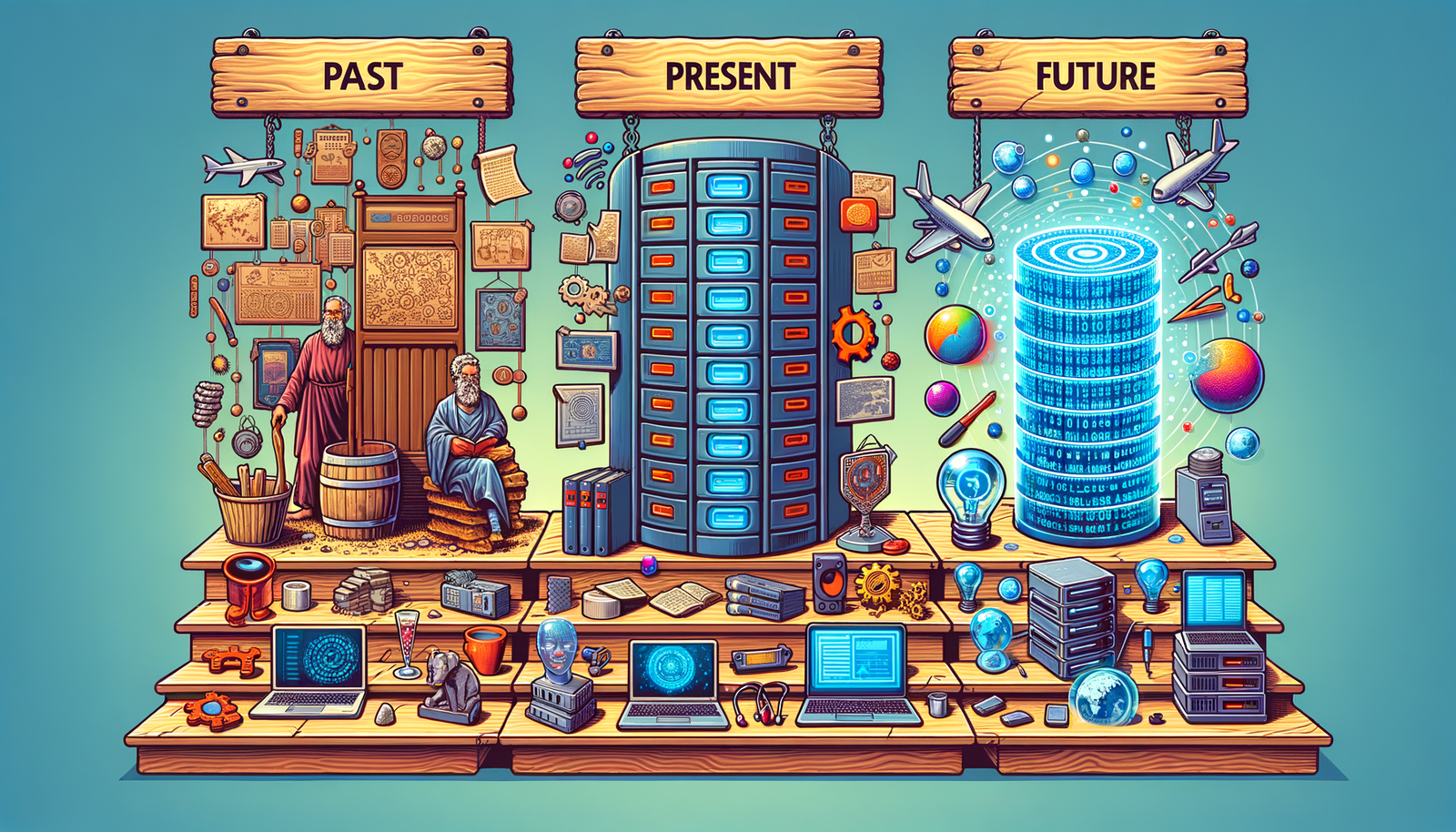Your Cart is Empty
Customer Testimonials
-
"Great customer service. The folks at Novedge were super helpful in navigating a somewhat complicated order including software upgrades and serial numbers in various stages of inactivity. They were friendly and helpful throughout the process.."
Ruben Ruckmark
"Quick & very helpful. We have been using Novedge for years and are very happy with their quick service when we need to make a purchase and excellent support resolving any issues."
Will Woodson
"Scott is the best. He reminds me about subscriptions dates, guides me in the correct direction for updates. He always responds promptly to me. He is literally the reason I continue to work with Novedge and will do so in the future."
Edward Mchugh
"Calvin Lok is “the man”. After my purchase of Sketchup 2021, he called me and provided step-by-step instructions to ease me through difficulties I was having with the setup of my new software."
Mike Borzage
Design Software History: The Impact of Big Data on Design Decision-Making: Historical Evolution, Core Technologies, and Future Trends
July 13, 2024 4 min read


Introduction to Big Data in Design
Definition and Scope
The term "big data" refers to extremely large data sets that can be analyzed computationally to reveal patterns, trends, and associations, especially regarding human behavior and interactions. In the context of design, big data encompasses a wide array of information that can be leveraged to optimize and innovate within various fields, including engineering, architecture, and graphic design. The scope of big data in design is vast, encompassing structured and unstructured data gathered from numerous sources.
Historical Context
The evolution of data collection and analysis has profoundly impacted the design industry. In the early days, data collection was manual and limited in scope. Designers relied heavily on intuition and small sample sizes, often constrained by technological limitations. Early examples of data usage in design can be found in market research and user feedback mechanisms, which were rudimentary and lacked the sophistication of today's big data technologies. Limitations were apparent in the accuracy and efficiency of the design processes before the advent of big data technologies, which paved the way for a new era in design decision-making.
Importance
In today's competitive industries, data-driven decision-making is not just a luxury but a necessity. The modern design landscape demands precision, speed, and innovation, all of which are facilitated by the effective use of big data. The benefits of incorporating big data into design decision-making are manifold:
- Efficiency: Streamlining design processes and reducing time-to-market.
- Accuracy: Enhancing the precision of design specifications and outcomes.
- Innovation: Enabling the discovery of new design possibilities and solutions through data insights.
Core Technologies Enabling Big Data in Design
Data Collection Methods
The foundation of big data in design lies in the methods used to collect vast amounts of data. This includes sensors, IoT devices, and other data-gathering technologies. For instance, sensors can capture user interactions, environmental data, and material properties, offering a comprehensive data set for analysis. IoT devices have revolutionized data collection by providing real-time data across various applications, from smart buildings to connected industrial machines.
Storage Solutions
Once collected, the challenge lies in storing and managing the data. Cloud computing and data lakes have emerged as essential solutions for handling the sheer volume and complexity of big data. Companies such as AWS, Google Cloud, and Microsoft Azure offer robust platforms that provide scalable storage solutions. These platforms support the storage, retrieval, and processing of big data, making it accessible for analysis and utilization in design processes.
Data Analytics Tools
The analysis of big data necessitates advanced tools and algorithms. Machine learning algorithms and statistical methods play a pivotal role in extracting meaningful insights from large data sets. Software and tools such as MATLAB, Python libraries (e.g., Pandas, NumPy), and R are extensively used for data analytics. These tools enable designers to model complex data, identify patterns, and make informed decisions based on quantitative data analysis.
Applications in Various Design Fields
Product Design and Manufacturing
In product design and manufacturing, big data is utilized throughout the product lifecycle, from initial concept to production and beyond. Companies like General Electric and Siemens leverage big data to improve product efficiency, quality, and performance. Data-driven decision-making enables these companies to optimize design specifications, predict maintenance needs, and enhance production processes.
Architectural Design
Architectural design has also seen significant advancements through the use of big data. Data-driven architectural projects utilize tools and platforms such as Autodesk’s BIM 360, Rhino, and Grasshopper to analyze and visualize building data. These tools aid architects in creating more sustainable, efficient, and innovative designs by incorporating real-time data on environmental conditions, material properties, and user behavior.
Graphic and User Experience Design
Big data has a profound impact on user interface (UI) and user experience (UX) design. By analyzing user interactions and feedback, companies such as Adobe and Sketch can refine their design processes to enhance usability and user satisfaction. Data-driven insights help designers create intuitive, responsive, and engaging user interfaces, ultimately leading to better user experiences.
Challenges and Future Directions
Challenges
Despite the many benefits, the integration of big data in design is not without challenges. Key issues include:
- Data Privacy and Security: Ensuring the protection of sensitive data from breaches and misuse.
- Data Complexity and Volume: Managing the vast amounts of data and extracting meaningful insights.
- Workflow Integration: Seamlessly incorporating big data analytics into existing design workflows.
Future Trends
The future of big data in design is promising, with trends pointing towards even greater integration of predictive analytics and artificial intelligence. These technologies will enable more proactive and intelligent design decision-making. Quantum computing is poised to address the challenges of handling large data sets, offering unprecedented computational power. Emerging technologies such as blockchain and edge computing are also expected to play a significant role in the future of big data in design, providing secure and efficient data processing and storage solutions.
Conclusion
In summary, big data has a transformative impact on design decision-making across various fields. By leveraging advanced data collection, storage, and analytics technologies, designers can achieve greater efficiency, accuracy, and innovation. As we look to the future, the continued evolution of big data technologies promises to further revolutionize the design landscape, unlocking new potential and driving the next wave of design innovation.
Also in Design News

Rhino 3D Tip: GPU Optimization for Rhino Render (Cycles), V-Ray, and Real‑Time Plugins
January 01, 2026 2 min read
Read More
Cinema 4D Tip: Efficient Lookdev Iteration Using Cinema 4D Picture Viewer History
January 01, 2026 2 min read
Read More
Revit Tip: Standardized Revit Export for Reliable Navisworks Clash Detection
January 01, 2026 2 min read
Read MoreSubscribe
Sign up to get the latest on sales, new releases and more …


